The Origin and History of the Cat Girl
Nekomimi History
It’s quite common to see cat girls and neko characters portrayed in media nowadays…but when and where did the concept come from? How did it become so popular that it’s influenced everything from storybooks, anime, and western movies to cosplay communities and petplay groups?
Well, it all started in 1924 when Kenji Miyazawa (Japanese author in the early Shōwa period of Japan) created 水仙月の四日 (The 4th of narcissus month) where the first ever Nekomimi appears as 雪婆んご. (Picture below) This children’s story book from the 20’s was the first stepping stone that would pave the way for cat girls as we know them today.

It can be assumed that Kenji adopted the idea from the japanese folklore of “Bakeneko”, demon cats who can shapeshift and become humanoid. Or possibly from the Kitsune, fox demons who could shapeshift into beautiful women.
(Man walking with a Bakeneko prostitute by the Shinagawa Sea.) (Public domain)
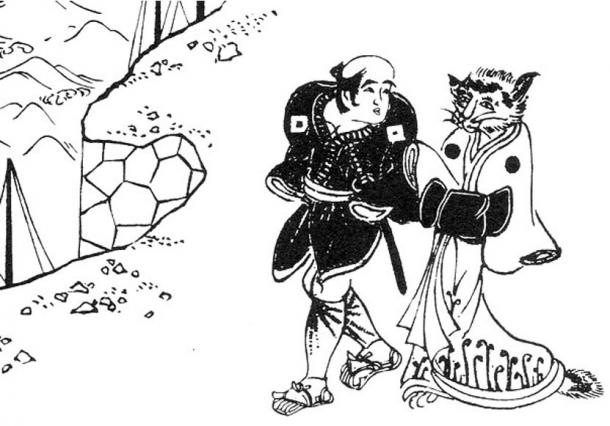
Around the 1940’s, DC comics debuted two iconic cat girls that we know and love today. Catwoman and Cheetah graced the comic pages giving readers in the west a taste of feline feminine power. It wasn’t until nine years later in Japan that the nekomimi would appear again in an anime known as Ousama no Shippo (The King’s Tail) in 1949. (In photo)
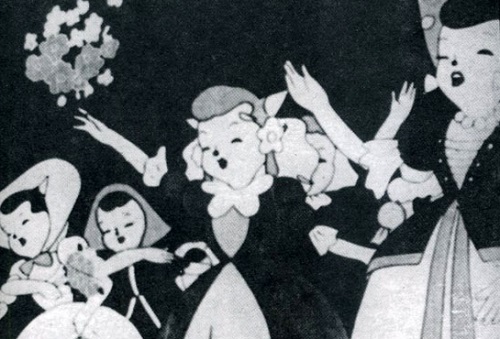
It’s difficult to find footage due to it’s age, but it seemed to feature a whole village of neko girls and a cat king. It seems that this film launched a small trend, as women with cat and wolf ears would make sporadic appearances in Japanese films and literature. In the late 1960’s, a popular anime called GeGeGe No Kitaro featured Neko Musume, a character that had shapeshifting abilities due to her being a yokai (ghost). The children of the 70’s in US were fast fans of Jose and the Pussycats.
(Catwoman from DC comics)

It wasn’t until the 1980’s that the trend would return and the humble neko girl would make an appearance again in an anime film called “The star of cottonland” which told the story of a chibi neko kitten, and Bagi, the monster of mighty nature in 1984, which featured a genetically modified human/cat mix. Just a couple of years later, to-y (A rock band anime) swept the fictional stage in 1987, with Niya who commonly wore a cat ear headband. A year later, the Puma sisters from “Dominion tank police” explored their take on mech anime and neko culture mixed. The 1980’s were arguably the turning point for cat girls in media, as the trope started to be featured much more than the years prior.
(A scene from “The star of cottonland” pictured below)
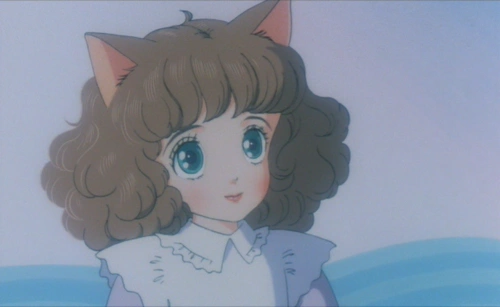
In 1989, popular series Ranma 1 1/2 featured a new kind of neko character…one that would otherwise look human but could shapeshift into a cat. Shampoo (one of Ranma’s love interests) popularized the trope with her large fan following.
(Akane, Ranma’s other love interest pictured in kitten play attire)
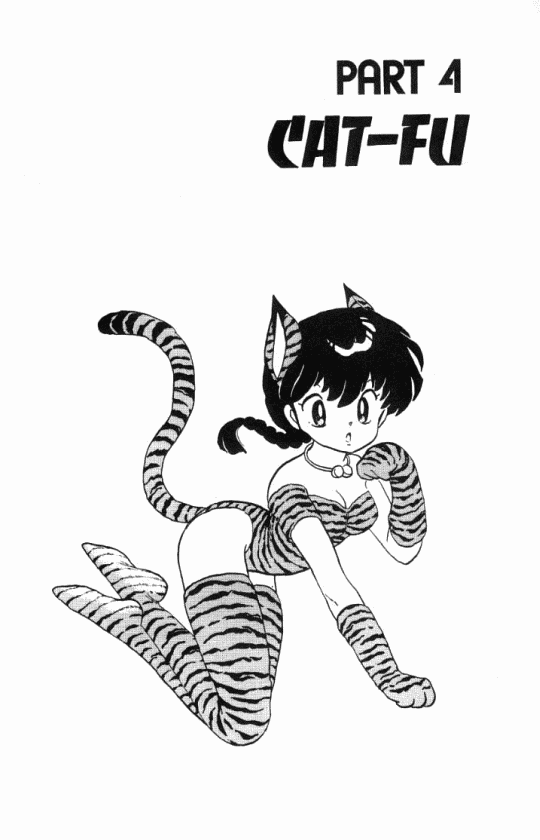
Sailor Tin Nyanko from sailor moon in 1992, Natsuki Sasahara from hyper police in 1997, Aisha ClanClan from Outlaw star in 1998, Sakura kinomoto from card captor sakura in April 1998, Neferpitou from HunterXHunter in 1999, Taruto from magical Nyan Nyan Taruto in 2001, Kisa Sohma from Fruits basket (July 2001), and Chiyo Mihama from Azumanga Daioh (2002) are just some of the iconic characters that paved the way for future neko’s today.
(Sailor Tin Nyanko, Sailor moon 1992)

Catgirls in Cosplay
It wasn’t until the mid to late 90’s that Catgirl cosplay and pet play started rising up. And that is when the first Nekomimi cosplays began appearing on the streets of Harajuku, Yoyogi, and Akihabara in Japan. It was quickly embraced by the rest of the world.

Neko Con held it’s first convention on October 2nd 1998, all cosplays were welcome but it encouraged neko cosplay, community and kitten play in the US.

Cat Girls in Petplay
The origins of animal petplay are not specific, as there are most likely many. However, its origins are heavily influenced by costuming, fiction, myth and folklore.

Non sexual animal roleplay was a common part of rituals in many tribal cultures in both recent and likely ancient times, often having to reach adulthood by ritually receiving their spirit animal. Examples of the former include many of the American Indian tribes and Arctic natives. Examples of the latter are depicted in cave paintings. In 1911, Julia Tuell photographed the last Animal Dance (“Massaum”) performed by the Northern Cheyenne of Montana.
(hekkil.deviantart.com)

Some of the earliest published images of animal play are to be found in the work of John Willie in Bizarre magazine published from 1946 to 1959.
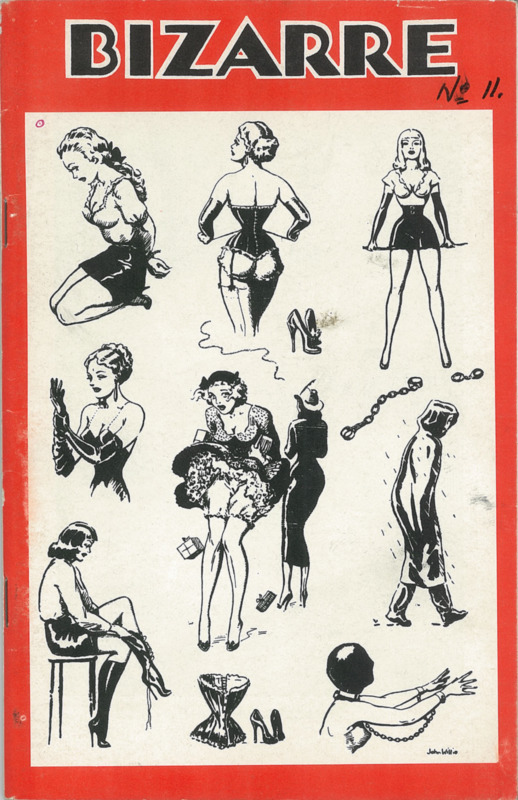
Some comics throughout history feature characters and scenarios related to pet play; such as DC Comics’s Wildcat, Catwoman,Vixen, Marvel’s Tigra, Man-Wolf, Black Cat, or even Nastassja Kinski’s Irena Gallier in the 1982 film Cat People, and Miss Kitty from the movie Monkeybone. All involve animal qualities taken on by humans. Some would even count the enactment or belief in therianthropy as falling under human animal roleplay or transformation play.
(Chobits, 2002)

Whatever the origin, we are certainly appreciative of all the people, art and ideas that paved the way for us to be our purrfect selves today! 😉
Sources:
https://en.m.wikipedia.org/wiki/Animal_roleplay
https://en.m.wikipedia.org/wiki/Catgirl#History
Images: credit listed with picture or sourced from Wikipedia/Google.



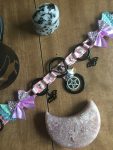
This was so informative. So many things that I had never even thought to contemplate. I didn’t realize how far back it could be traced back. I appreciate you adding the bit about the ritual to find ones spirit animal(mine is the mountain lion)
Report commentThank you! According to my birthday my spirit animal is a winter goose. Is there a different chart or only one that goes off of birth dates?
Report commentTo truly find your spirit animal you need to do the actual ritual,you will go in a trance like state and your spirt animal will present itself to you. I was raised with Shawnee traditions on my fathers side. You could see his Native blood, but you would never know looking at me (with me being translucently white lol)but to be fair by the time it got to me it has been very diluted.
Report commentWow, that’s amazing that you got to experience the real thing and get in touch with your roots! I’ve always wanted to take that journey and find mine, ( if the ritual is open to outsiders). Perhaps someday I’ll have the opportunity if so.
Report commentYou can do it on your own through meditation. Animal spirt guides come to us throughout our lives as they are needed. We each have more than one that come to us at different stages. The first two we get tend to stay with us throughout as a protector and a nurturer.
Report commentI loved reading this article so much =^_^=! Thank you for sharing all of this awesome information with us.
Report commentTy @toxsuki ^.^
Report commentYou are very welcome kitten sister =^_^=
Report commentThis was a great read. I learned a lot and it’s nice to see the history and all the different things that led into cat girls today.
Report commentThanks @Winter.Kitten 🙂 I’m glad you enjoyed it.
Report commentThis is great. How informative. I always wondered how bdsm became entangled with the cat girl world, do you know?
Report commentWell, petplay has been documented since the late 40’s in magazines such as Bizzare, but the exact origins are fuzzy at best since there’s so many sources. I believe the idea was heavily influenced by the anime trope, and has since developed into what it is today. However, there are many folklores surrounding similar beings such as the kitsune in Japanese culture or the Huli jing in Chinese mythology. In fact…there were even cults in ancient china who worshiped Daji, who was a real person ( A ruthless lady who delighted in the suffering of others, stories say. She was the favorite consort of the king ) she later was depicted as a fox demon and shrines rose up worshipping her until it was outlawed.
Report commentNeedless to say, I don’t think petplay or fetishizing animal/human hybrids is a new concept by any means. I think it’s something that has only recently been more documented since it would have been considered taboo in early times.
Report commentOh, totally. It seems like it’s really pushing it’s way into mainstream media a lot more in the last decades, even.
Report commentThat’s so cool! You learn something every day, or at least, I try to!
Report commentThis is awesome ty for sharing this <3
Report comment^.^ <3
Report commentWow! Look at all of that history! I’ll have to go and see if I can find any of these stories to read or shows to watch!
Report commentSome of the really old films and books are a little more difficult to track or find subbed, but anything past the 60’s is pretty easy to locate. ^.^ I’ve seen a handful on the list but I’m planning on checking out some old ones myself. I find the late 80’s and 90’s anime to be so aesthetic (I love the art style).
Report commentWow, this was extremely informative. Thank you
Report commentI’m happy you liked it @drusilav
Report commentAbsolutely you can really find some great stuff that vintage 🙂
Report commentWonderful article and I appreciate all the research. Kitten play is truly a thing of its own.
Report commentIt certainly is. Thanks @lunawhispurr
Report comment@keeteakat. What a wonderful article. What a great education about our kitten roots. I do remember Josie and the Pussycats and that’s really about the only one I recognized, lol. Great pictorial references. Thank you for the enlightenment.
Report commentI used to catch a few episodes on Boomerang. It was definitely a cute show. I’m glad you liked it @DeviantMynx
Report commentOh man. All of this new pop culture lingo, apps, and fashion. Guess I’m not as hip and cool as I thought I was, lol. I’ve got some work to do!!
Report commentThis was amazing to read. Thank you for sharing all of this amazing information. Just wow <3
Report commentAw, thanks @Toxic <3
Report commentWow this was a truly good read and educational!
Report commentGlad you enjoyed the read @november :]
Report comment